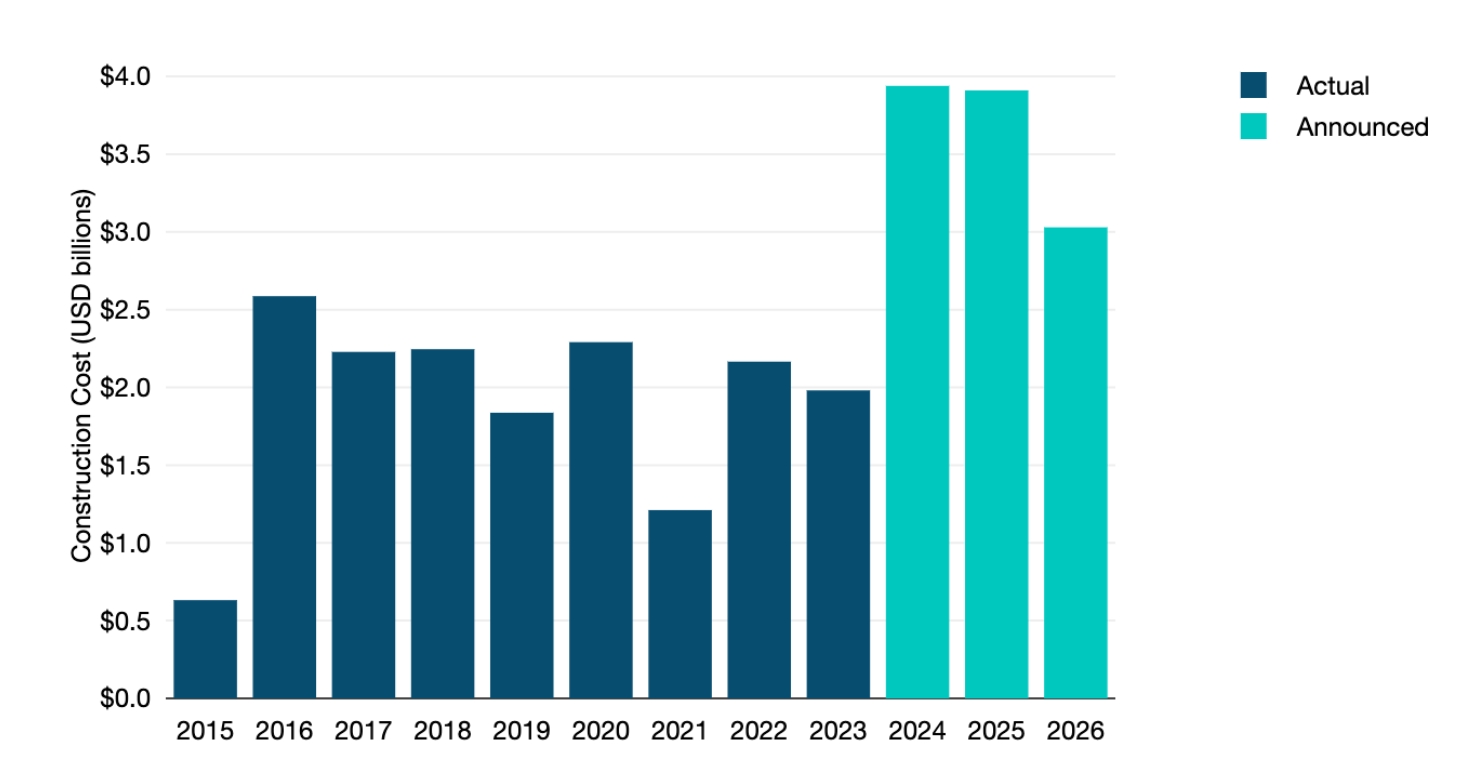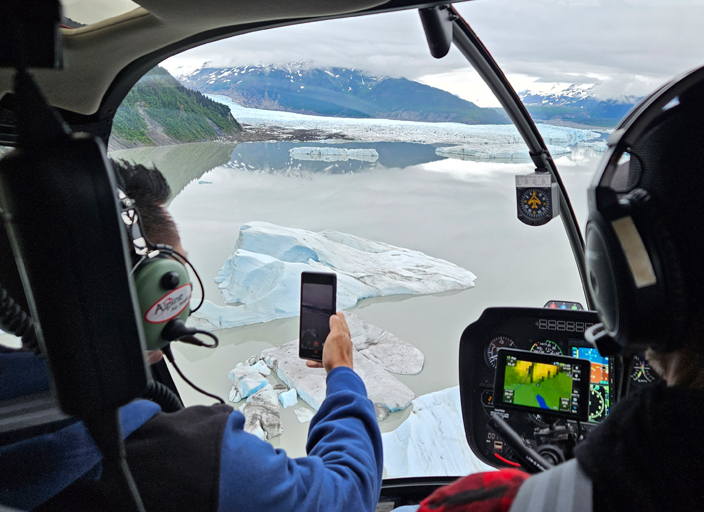All (or at least most) of us here in the United States and everywhere else, pay taxes in one form or another. Whether it’s income tax, sales tax, a value-added tax, or even the type of tax that those of us in the U.S. can’t go a day without hearing about (yes, that’s you “tariff”), a chunk of our hard-earned income contributes to several and various government agendas. Taxes are typically used to fund a long list of programs and services for the benefit of companies and taxpayers. These federally supplied services are one area that most individuals probably don’t think of when complaining about where their money is going. And, this is the exact benefit you’re using right now to read this blog post—the internet!
In today’s digital age, high-speed, reliable internet is no longer a luxury—it’s a necessity just as essential as electricity and clean water! The internet fuels businesses and remote work, connects friends and families, supports health care and education systems, and maybe, most importantly, allows us to stream Squid Game as soon as it’s released (OK, not most important, but probably a high priority for some). Our lives are increasingly dependent on robust internet infrastructure.
Yet, despite its importance, millions of Americans and people all over the world, especially in remote, rural, and unserved/underserved areas, still lack access to reliable broadband connectivity. Enter government grants, the behind-the-scenes lifeline helping to bridge the so-called “digital divide.” For example, the U.S. government recently allocated 65 billion USD via the Infrastructure Investment and Jobs Act (2021) to be utilized for broadband deployment and affordable telecommunications infrastructure, with the goal of bridging the “digital divide” to ensure all Americans have access to high-speed internet.
Other governments, from Canada, Australia, and Asia to the European Union, also have several similar initiatives aimed to bridge the divide and deliver high-speed, reliable internet access within their countries. From funding fiber optic networks to expanding 5G infrastructure, government-backed telecommunications projects have transformed connectivity for many communities and people around the globe.
Can We (the Submarine Cable Industry) Get in on that Action?
Pioneer Consulting focuses on implementing submarine fiber optic cable networks worldwide, so the more submarine cable systems that are built, whether privately or publicly funded, the busier we tend to be. For those intimately involved in the development, implementation, or operation of these submarine cable networks, you’ll know there hasn’t been a shortage of new submarine cable-building activity within the past decade.
In 2016, TeleGeography depicted 321 submarine cable systems that were either active, under construction, or expected to be fully funded on their submarine cable map. Today, this has grown to 597 submarine cable systems with a combined construction cost of 16.5 billion USD that entered service between 2015 through 2023, and a whopping 10.8 billion USD of additional construction announced for 2024, 2025, and 2026 combined!
 Source: © 2024 TeleGeography
Source: © 2024 TeleGeography
Most projects, whether trans-oceanic submarine cables creating digital highways between continents or shorter regional cables linking various places within a country are traditionally funded with investments from the cable owners themselves, private equity, debt facilities, or any combination thereof. This can provide great flexibility in how projects are executed, with the ability to make various project decisions without the need for extensive bureaucratic procedures. Without getting into the various challenges that ultimately exist with any undersea cable project, private funding can lead to faster project initiation and completion, driven by profit motives. This can translate into efficient project management practices aimed at minimizing costs and maximizing returns.
However, with government funding and grant programs such as the U.S. Broadband Equity, Access and Deployment (BEAD) Program or the EU’s Connecting Europe Facility (CEF Digital), US carriers have had access to an additional (and massive) source of funding for their subsea cable projects to provide connectivity to places that otherwise would not be economically viable to do so via traditional commercially funded methods.
Does that mean our Tax Dollars are Actually Being put to Good Use?
There are many ways this question can be answered (both positively and negatively). Still, I can say from firsthand experience that even if a small fraction of my taxes goes towards bridging this digital divide, I’ll take that as a big win! In my role at Pioneer Consulting, I advise and assist in the development, management, and implementation of dozens of submarine cable systems. The projects I’m most proud of are the ones that utilize government grants. Specifically, two Pioneer Consulting-led projects: FISH (Fiber Internet Serving Homes) and HIFL (Hawaiian Islands Fiber Link).
The FISH Project (under development by Cordova Telecom Cooperative via funds from the U.S. Department of Agriculture’s ReConnect Program) will bring affordable, reliable, and much-needed high-speed internet access to various communities and tribal villages in Alaska.
 Photo Caption: Pioneer Consulting’s Senior Director Phil deGuzman flying above Cordova, Alaska in 2023.
Photo Caption: Pioneer Consulting’s Senior Director Phil deGuzman flying above Cordova, Alaska in 2023.
The HIFL Project, (under development via a public-private partnership between Ocean Networks and the University of Hawai’i), utilizes funds from a combination of federal broadband funds and private investment. The HIFL project is a key component of the state of Hawai’i’s Connect Kakou initiative to ensure reliable and affordable access to high-speed internet for all residents across the state.
 Source: iStock.com
Source: iStock.com
Working on both the FISH and HIFL projects, I have the direct honor and privilege of working with teams comprised of individuals who truly care about putting these tax dollars to good use by ultimately serving you—the people.
“Red Tape”
For those unfamiliar with the term “red tape,” it refers to the extensive regulations and bureaucratic governmental procedures, which usually must be navigated with the precision of a ship’s captain steering a ship through treacherous offshore storms. Although government procedures are designed to ensure environmental protection or the proper use of taxpayers’ money, policies are infamously known to be time-consuming, impeding progress, and, at times, unintentionally creating unwarranted confusion.
The turbulent waters of regulations, reviews, processes, and compliance demands may threaten to push the project off course or delay its arrival in service. Yet, much like an experienced captain, we at Pioneer Consulting (in conjunction with our clients) skillfully guide their efforts, making strategic adjustments to “weather” the governmental storms of red tape. This involves not only spending project funds judiciously but also learning to navigate and overcome challenges you may not typically encounter on privately funded submarine cable projects.
Certain challenges are common amongst any submarine cable system—minimizing cost overruns, managing geographical barriers, and everyone’s favorite long-pole in the project plan of work—permits. However, some of the unique challenges Pioneer Consulting has faced and overcome thus far include:
- An assumption that all infrastructure projects are developed equally;
- A lack of understanding due to new or unfamiliar territory;
- High project costs due to remote locations and lack of existing infrastructure;
- Firm budget constraints due to grant or funding regulations;
- Changes in government policies, budget reallocations, or administrations; and
- Constant reviews and requirements for fund usage monitoring and compliance (which is certainly needed when dealing with government funds).
Private funding allows for quick decision-making and project execution due to the absence of some of these bureaucratic hurdles. In contrast to government-funded projects, privately funded projects could face delays due to regulatory compliance if not considered well in advance. Early coordination and collaboration with key stakeholders and involved government agencies are critical first steps in getting off on the right foot. Careful planning and management are key to any successful project, but understanding the unique challenges associated with government-funded projects needs to be built into the overall development plan with the required contingencies in place to address these challenges head-on.
The Future of Tax-Funded Internet Expansion
As I said earlier, the internet is no longer a luxury—it’s a necessity! Government grants and funding are pivotal in enhancing internet infrastructure, solving market failures, and ensuring all global citizens can access the digital resources they need. While government funds are a welcome and, in many cases, much-needed (or the only) source of funding to enable connectivity to remote, unserved, and underserved locations, managing a submarine cable project funded privately vs. publicly involves distinct approaches and considerations. Where private funds may offer efficiency and flexibility, government funds ensure equity, public welfare, and comprehensive regulator compliance. Both funding mechanisms are crucial for developing sustainable and inclusive infrastructure.
With smart investments and strategic planning, publicly funded internet infrastructure can create a more connected and equitable digital future for everyone. So the next time you start cursing at your paycheck, wondering where your hard-earned cash has gone, perhaps you can find relief in knowing that you may have contributed to a life-saving telehealth visit, a child’s first online learning session, or a newfound Squid Game fan’s ability to stream that next episode.
